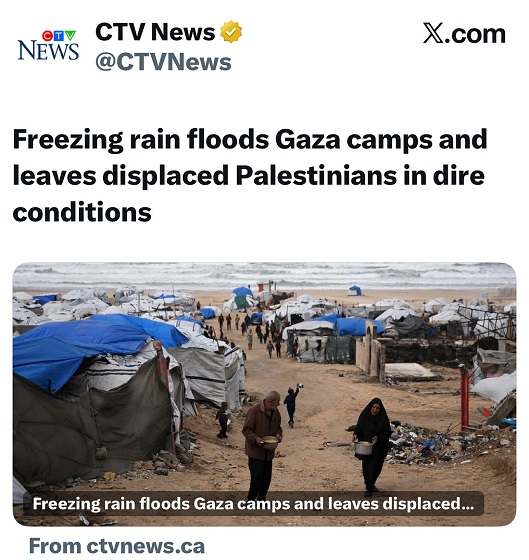Brownstone Institute
The Selfish Collective

Originally published by the Brownstone Institute
BY
Much of the debate surrounding Covid — and increasingly now, other crises — has been framed in terms of individualism vs. collectivism. The idea is that individualists are motivated by self-interest, while collectivists put their community first.
This dichotomy paints the collective voice, or the community, as the prosocial option of two choices, where the threat lies with recalcitrant individuals holding everyone else back. The individual threatens the common good because they won’t go along with the program, the program everyone else has decided upon, which is what is best for everyone.
There are several immediate problems with this logic. It is a string of loaded assumptions and false equivalencies: first, it equates the philosophy of collectivism with the idea of prosocial motivation; secondly, it equates prosocial behavior with conformity to the collective voice.
Merriam-Webster defines collectivism as follows:
1 : a political or economic theory advocating collective control especially over production and distribution also : a system marked by such control
2 : emphasis on collective rather than individual action or identity
Note that there is no mention here of internal motivations — and rightly so. The philosophy of collectivism emphasizes collectively organized behavioral patterns over those of the individual. There is no prescription for these reasons. They could be prosocially motivated, or selfish.
After the past couple of years of analyzing collectivist behavior during the Covid crisis, I have come to the conclusion that it is just as likely as individualism to be motivated by self-interest. In fact, in many ways, I would say it is easier to attain one’s selfish interests by aligning oneself with a collective than to do so individually. If a collective composed primarily of self-interested individuals unites over a common goal, I call this phenomenon “the selfish collective.”
When “Common Good” is Not Collective Will
One of the most simple examples I can give of a selfish collective is that of a homeowner’s association (HOA). The HOA is a group of individuals who have unified into a collective in order to protect each of their own self-interests. Their members want to preserve their own property values, or certain aesthetic characteristics of their neighborhood environment. In order to achieve this they often feel comfortable dictating what their neighbors can and cannot do on their own property, or even in the privacy of their own homes.
They are widely despised for making homeowners’ lives miserable, and for good reason: if they claim the right to safeguard the value of their own investments, doesn’t it stand to reason that other homeowners, with perhaps different priorities, have a similar right to rule over the little corner of the world they paid hundreds of thousands of dollars for?
The selfish collective resembles the political concept of “tyranny of the majority,” of which Alexis de Tocqueville wrote in Democracy in America:
“So what is a majority taken as a whole, if not an individual who has opinions and, most often, interests contrary to another individual called the minority. Now, if you admit that an individual invested with omnipotence can abuse it against his adversaries, why would you not admit the same thing for the majority?”
Social groups are made up of individuals. And if individuals can be selfish, then collectives made up of individuals with common interests can be equally selfish, attempting to steamroll their visions over the rights of others.
However, the selfish collective is not necessarily comprised of a majority. It could just as easily be a loud minority. It is characterized not by its size, but by its inherent attitude of entitlement: its insistence that other people must sacrifice increasingly high-level priorities in order to accommodate increasingly trivial priorities of its own.
This inverse relationship of priority valuation is what belies the true nature of the selfish collective, and distinguishes its motives from the true “common good.” Someone motivated by genuine social concern asks the question: “What are the priorities and goals of all community members, and how can we try to satisfy these priorities in a way that everyone finds acceptable?”
Social concern involves negotiation, tolerance of value differences, and the ability to compromise or see nuance. It involves genuinely caring about what others want — even (and especially) when they have different priorities. When this concern extends only to those in one’s “in-group,” it may appear to be prosocial, but is actually an extension of self-interest known as collective narcissism.
Collective Narcissism and Conformity
From the perspective of the selfish individual, collectivism provides a host of opportunities for achieving one’s goals — perhaps better than one could on one’s own. For the manipulative and calculating, the collective is easier to hide behind, and the ideal of the “greater good” can be weaponized to win moral support. For cowards and bullies, the strength of numbers is emboldening, and can help them overpower weaker individuals or coalitions. For more conscientious individuals, it can be tempting to justify one’s natural selfish inclinations by convincing oneself the group holds the moral edge.
In social psychology, collective narcissism is the extension of one’s ego beyond oneself to a group or collective to which one belongs. While not all the individuals involved in such a collective are necessarily narcissists themselves, the emergent “personality” of the group mirrors the traits of narcissistic individuals.
According to Dr. Les Carter, a therapist and creator of the Surviving Narcissism YouTube channel, these traits include the following:
- A heavy emphasis on binary themes
- Discouraging free thinking
- Prioritizing conformity
- Imperative thinking
- Distrusting or dishonoring differences of opinion
- Pressure to display loyalty
- An idealized group self-image
- Anger is only one wrong opinion away
What all of these traits have in common is an emphasis on unity rather than harmony. Instead of seeking coexistence among people or factions with differing values (the “social good” that includes everyone), the in-group defines a set of priorities to which all others must adapt. There is one “correct way,” and anything outside it has no merit. There is no compromise of values. Collective narcissism is the psychology of the selfish collective.
The Hidden Logic of Lockdown
Proponents of Covid restrictions and mandates have typically claimed they were motivated by social concern, while painting their opponents as antisocial menaces. But does this bear out?
I have no doubt that a great many people, motivated by compassion and by civic duty, genuinely strove to serve the greater good through following these measures. But at its core, I argue that the pro-mandate case follows the logic of the selfish collective.
The logic goes something like this:
- SARS-CoV-2 is a dangerous virus.
- Restrictions and mandates will “stop the spread” of the virus, thereby saving lives and shielding people from the harm it causes.
- We have a moral duty as a society to shield people from harm wherever possible.
- Therefore, we have a moral duty to enact restrictions and mandates.
Never mind the veracity of any one of these claims, which has already been the subject of endless debate over the past two and a half years. Let’s instead focus on the logic. Let’s assume for a second that each of the three premises above were true:
How dangerous would the virus have to be in order for the restrictions and mandates to be justified? Is any level of “dangerousness” enough? Or is there a threshold? Can this threshold be quantified, and if so, at what point do we meet it?
Likewise, how many people would restrictions and mandates need to save or shield before they are considered to be worthwhile measures, and what level of collateral damage from the measures is considered acceptable? Can we quantify these thresholds either?
What other “socially beneficial outcomes” are desirable, and from whose perspective? What other social priorities exist for various factions within the collective? What logic do we use to weigh these priorities against each other? How can we respect priorities that may weigh a lot to their respective advocates, but which directly compete or clash with the “socially beneficial outcome” of eliminating the virus?
The answers to these questions would help us organize our priorities within a larger, more complex social landscape. No one social issue exists in a vacuum; “Responding to SARS-CoV-2” is one possible social priority out of millions. What gives this priority in particular precedence over any of the others? Why does it get to be the top and only priority?
To date I have never seen a satisfactory answer to any of the above questions from proponents of mandates. What I have seen are abundant logical fallacies used to justify their preferred course of action, attempts to exclude or minimize all other concerns, rejection of or silence regarding inconvenient data, dismissal of alternative opinions, and an insistence that there is one “correct” path forward to which all others must conform.
The reason for this, I would argue, is that the answers don’t matter. It doesn’t matter how dangerous the virus is, it doesn’t matter how much collateral damage is done, it doesn’t matter how many people might die or be saved, it doesn’t matterwhat other “socially beneficial outcomes” we might strive for, and it doesn’t matter what anybody else might prioritize or value.
In the logic of the selfish collective, the needs and desires of others are afterthoughts, to be attended if, and only if, there is something left over once they get their way.
This particular collective has made “responding to SARS-CoV-2” their top priority. And in pursuit of that priority, all others can be sacrificed. This one priority has been granted carte blanche to invade all other aspects of social life, simply because the selfish collective has decided it is important. And in pursuit of this goal, increasingly trivial sub-priorities that are deemed relevant can now take precedence over increasingly higher-level priorities of other social factions.
The end result of this is the absurd micromanagement of other people’s lives, and the simultaneous cruel dismissal of their deepest loves and needs. People were forbidden from saying goodbye to dying parents and relatives; romantic partners were separated from each other; and cancer patients died because they were denied access to treatment, just to name a few of these cruelties. Why were these people told their concerns didn’t matter? Why did they have to be the ones to sacrifice?
The argument of the selfish collective is that individual freedom must end as soon as it risks negatively impacting the group. But this is a smokescreen: there is no unified collective perceiving “negative impacts” in a homogeneous way. The “collective” is a group of individuals, each with different sets of priorities and value systems, only some of whom have coalesced around a specific issue.
At the root of this entire discussion lies the following question: How, on a macro scale, should society allocate importance to the diverse, competing priorities held by the individuals that make it up?
The selfish collective, which represents a particular faction, attempts to obscure the nuance of this question by trying to conflate themselves with the entire group. They try to make it seem as if their own priorities are the only factors under consideration, while dismissing other elements of the debate. It is a fallacy of composition mixed with a fallacy of suppressed evidence.
By magnifying their own concerns and generalizing them to the whole group, the selfish collective makes it seem as if their goals reflect “the good of everyone.” This has a reinforcing effect because the more they focus attention on their own priorities relative to others, the more others will come to believe those priorities are worthy of attention, adding to the impression that “everyone” supports them. Those with different value systems are gradually subsumed into a collective unity, or erased.
This does not strike me as prosocial behavior — it is deception, egotism, and tyranny.
A truly prosocial approach would not shut out all other goals and insist on one way forward. It would take into account the different priorities and viewpoints of various factions or individuals, approach them with respect, and ask how to best facilitate some sort of harmony among their needs. Instead of prescribing behavior onto others it would advocate for dialogue and open debate, and it would celebrate differences of opinion.
A prosocial approach doesn’t elevate some nebulous, abstract, and misleading image of a “collective” above the humanity and diversity of the individuals who make it up.
A prosocial approach makes space for freedom.
Addictions
Coffee, Nicotine, and the Politics of Acceptable Addiction

From the Brownstone Institute
By
Every morning, hundreds of millions of people perform a socially approved ritual. They line up for coffee. They joke about not being functional without caffeine. They openly acknowledge dependence and even celebrate it. No one calls this addiction degenerate. It is framed as productivity, taste, wellness—sometimes even virtue.
Now imagine the same professional discreetly using a nicotine pouch before a meeting. The reaction is very different. This is treated as a vice, something vaguely shameful, associated with weakness, poor judgment, or public health risk.
From a scientific perspective, this distinction makes little sense.
Caffeine and nicotine are both mild psychoactive stimulants. Both are plant-derived alkaloids. Both increase alertness and concentration. Both produce dependence. Neither is a carcinogen. Neither causes the diseases historically associated with smoking. Yet one has become the world’s most acceptable addiction, while the other remains morally polluted even in its safest, non-combustible forms.
This divergence has almost nothing to do with biology. It has everything to do with history, class, marketing, and a failure of modern public health to distinguish molecules from mechanisms.
Two Stimulants, One Misunderstanding
Nicotine acts on nicotinic acetylcholine receptors, mimicking a neurotransmitter the brain already uses to regulate attention and learning. At low doses, it improves focus and mood. At higher doses, it causes nausea and dizziness—self-limiting effects that discourage excess. Nicotine is not carcinogenic and does not cause lung disease.
Caffeine works differently, blocking adenosine receptors that signal fatigue. The result is wakefulness and alertness. Like nicotine, caffeine indirectly affects dopamine, which is why people rely on it daily. Like nicotine, it produces tolerance and withdrawal. Headaches, fatigue, and irritability are routine among regular users who skip their morning dose.
Pharmacologically, these substances are peers.
The major difference in health outcomes does not come from the molecules themselves but from how they have been delivered.
Combustion Was the Killer
Smoking kills because burning organic material produces thousands of toxic compounds—tar, carbon monoxide, polycyclic aromatic hydrocarbons, and other carcinogens. Nicotine is present in cigarette smoke, but it is not what causes cancer or emphysema. Combustion is.
When nicotine is delivered without combustion—through patches, gum, snus, pouches, or vaping—the toxic burden drops dramatically. This is one of the most robust findings in modern tobacco research.
And yet nicotine continues to be treated as if it were the source of smoking’s harm.
This confusion has shaped decades of policy.
How Nicotine Lost Its Reputation
For centuries, nicotine was not stigmatized. Indigenous cultures across the Americas used tobacco in religious, medicinal, and diplomatic rituals. In early modern Europe, physicians prescribed it. Pipes, cigars, and snuff were associated with contemplation and leisure.
The collapse came with industrialization.
The cigarette-rolling machine of the late 19th century transformed nicotine into a mass-market product optimized for rapid pulmonary delivery. Addiction intensified, exposure multiplied, and combustion damage accumulated invisibly for decades. When epidemiology finally linked smoking to lung cancer and heart disease in the mid-20th century, the backlash was inevitable.
But the blame was assigned crudely. Nicotine—the named psychoactive component—became the symbol of the harm, even though the damage came from smoke.
Once that association formed, it hardened into dogma.
How Caffeine Escaped
Caffeine followed a very different cultural path. Coffee and tea entered global life through institutions of respectability. Coffeehouses in the Ottoman Empire and Europe became centers of commerce and debate. Tea was woven into domestic ritual, empire, and gentility.
Crucially, caffeine was never bound to a lethal delivery system. No one inhaled burning coffee leaves. There was no delayed epidemic waiting to be discovered.
As industrial capitalism expanded, caffeine became a productivity tool. Coffee breaks were institutionalized. Tea fueled factory schedules and office routines. By the 20th century, caffeine was no longer seen as a drug at all but as a necessity of modern life.
Its downsides—dependence, sleep disruption, anxiety—were normalized or joked about. In recent decades, branding completed the transformation. Coffee became lifestyle. The stimulant disappeared behind aesthetics and identity.
The Class Divide in Addiction
The difference between caffeine and nicotine is not just historical. It is social.
Caffeine use is public, aesthetic, and professionally coded. Carrying a coffee cup signals busyness, productivity, and belonging in the middle class. Nicotine use—even in clean, low-risk forms—is discreet. It is not aestheticized. It is associated with coping rather than ambition.
Addictions favored by elites are rebranded as habits or wellness tools. Addictions associated with stress, manual labor, or marginal populations are framed as moral failings. This is why caffeine is indulgence and nicotine is degeneracy, even when the physiological effects are similar.
Where Public Health Went Wrong
Public health messaging relies on simplification. “Smoking kills” was effective and true. But over time, simplification hardened into distortion.
“Smoking kills” became “Nicotine is addictive,” which slid into “Nicotine is harmful,” and eventually into claims that there is “No safe level.” Dose, delivery, and comparative risk disappeared from the conversation.
Institutions now struggle to reverse course. Admitting that nicotine is not the primary harm agent would require acknowledging decades of misleading communication. It would require distinguishing adult use from youth use. It would require nuance.
Bureaucracies are bad at nuance.
So nicotine remains frozen at its worst historical moment: the age of the cigarette.
Why This Matters
This is not an academic debate. Millions of smokers could dramatically reduce their health risks by switching to non-combustion nicotine products. Countries that have allowed this—most notably Sweden—have seen smoking rates and tobacco-related mortality collapse. Countries that stigmatize or ban these alternatives preserve cigarette dominance.
At the same time, caffeine consumption continues to rise, including among adolescents, with little moral panic. Energy drinks are aggressively marketed. Sleep disruption and anxiety are treated as lifestyle issues, not public health emergencies.
The asymmetry is revealing.
Coffee as the Model Addiction
Caffeine succeeded culturally because it aligned with power. It supported work, not resistance. It fit office life. It could be branded as refinement. It never challenged institutional authority.
Nicotine, especially when used by working-class populations, became associated with stress relief, nonconformity, and failure to comply. That symbolism persisted long after the smoke could be removed.
Addictions are not judged by chemistry. They are judged by who uses them and whether they fit prevailing moral narratives.
Coffee passed the test. Nicotine did not.
The Core Error
The central mistake is confusing a molecule with a method. Nicotine did not cause the smoking epidemic. Combustion did. Once that distinction is restored, much of modern tobacco policy looks incoherent. Low-risk behaviors are treated as moral threats, while higher-risk behaviors are tolerated because they are culturally embedded.
This is not science. It is politics dressed up as health.
A Final Thought
If we applied the standards used against nicotine to caffeine, coffee would be regulated like a controlled substance. If we applied the standards used for caffeine to nicotine, pouches and vaping would be treated as unremarkable adult choices.
The rational approach is obvious: evaluate substances based on dose, delivery, and actual harm. Stop moralizing chemistry. Stop pretending that all addictions are equal. Nicotine is not harmless. Neither is caffeine. But both are far safer than the stories told about them.
This essay only scratches the surface. The strange moral history of nicotine, caffeine, and acceptable addiction exposes a much larger problem: modern institutions have forgotten how to reason about risk.
Brownstone Institute
The Unmasking of Vaccine Science

From the Brownstone Institute
By
I recently purchased Aaron Siri’s new book Vaccines, Amen. As I flipped though the pages, I noticed a section devoted to his now-famous deposition of Dr Stanley Plotkin, the “godfather” of vaccines.
I’d seen viral clips circulating on social media, but I had never taken the time to read the full transcript — until now.
Siri’s interrogation was methodical and unflinching…a masterclass in extracting uncomfortable truths.
A Legal Showdown
In January 2018, Dr Stanley Plotkin, a towering figure in immunology and co-developer of the rubella vaccine, was deposed under oath in Pennsylvania by attorney Aaron Siri.
The case stemmed from a custody dispute in Michigan, where divorced parents disagreed over whether their daughter should be vaccinated. Plotkin had agreed to testify in support of vaccination on behalf of the father.
What followed over the next nine hours, captured in a 400-page transcript, was extraordinary.
Plotkin’s testimony revealed ethical blind spots, scientific hubris, and a troubling indifference to vaccine safety data.
He mocked religious objectors, defended experiments on mentally disabled children, and dismissed glaring weaknesses in vaccine surveillance systems.
A System Built on Conflicts
From the outset, Plotkin admitted to a web of industry entanglements.
He confirmed receiving payments from Merck, Sanofi, GSK, Pfizer, and several biotech firms. These were not occasional consultancies but long-standing financial relationships with the very manufacturers of the vaccines he promoted.
Plotkin appeared taken aback when Siri questioned his financial windfall from royalties on products like RotaTeq, and expressed surprise at the “tone” of the deposition.
Siri pressed on: “You didn’t anticipate that your financial dealings with those companies would be relevant?”
Plotkin replied: “I guess, no, I did not perceive that that was relevant to my opinion as to whether a child should receive vaccines.”
The man entrusted with shaping national vaccine policy had a direct financial stake in its expansion, yet he brushed it aside as irrelevant.
Contempt for Religious Dissent
Siri questioned Plotkin on his past statements, including one in which he described vaccine critics as “religious zealots who believe that the will of God includes death and disease.”
Siri asked whether he stood by that statement. Plotkin replied emphatically, “I absolutely do.”
Plotkin was not interested in ethical pluralism or accommodating divergent moral frameworks. For him, public health was a war, and religious objectors were the enemy.
He also admitted to using human foetal cells in vaccine production — specifically WI-38, a cell line derived from an aborted foetus at three months’ gestation.
Siri asked if Plotkin had authored papers involving dozens of abortions for tissue collection. Plotkin shrugged: “I don’t remember the exact number…but quite a few.”
Plotkin regarded this as a scientific necessity, though for many people — including Catholics and Orthodox Jews — it remains a profound moral concern.
Rather than acknowledging such sensitivities, Plotkin dismissed them outright, rejecting the idea that faith-based values should influence public health policy.
That kind of absolutism, where scientific aims override moral boundaries, has since drawn criticism from ethicists and public health leaders alike.
As NIH director Jay Bhattacharya later observed during his 2025 Senate confirmation hearing, such absolutism erodes trust.
“In public health, we need to make sure the products of science are ethically acceptable to everybody,” he said. “Having alternatives that are not ethically conflicted with foetal cell lines is not just an ethical issue — it’s a public health issue.”
Safety Assumed, Not Proven
When the discussion turned to safety, Siri asked, “Are you aware of any study that compares vaccinated children to completely unvaccinated children?”
Plotkin replied that he was “not aware of well-controlled studies.”
Asked why no placebo-controlled trials had been conducted on routine childhood vaccines such as hepatitis B, Plotkin said such trials would be “ethically difficult.”
That rationale, Siri noted, creates a scientific blind spot. If trials are deemed too unethical to conduct, then gold-standard safety data — the kind required for other pharmaceuticals — simply do not exist for the full childhood vaccine schedule.
Siri pointed to one example: Merck’s hepatitis B vaccine, administered to newborns. The company had only monitored participants for adverse events for five days after injection.
Plotkin didn’t dispute it. “Five days is certainly short for follow-up,” he admitted, but claimed that “most serious events” would occur within that time frame.
Siri challenged the idea that such a narrow window could capture meaningful safety data — especially when autoimmune or neurodevelopmental effects could take weeks or months to emerge.
Siri pushed on. He asked Plotkin if the DTaP and Tdap vaccines — for diphtheria, tetanus and pertussis — could cause autism.
“I feel confident they do not,” Plotkin replied.
But when shown the Institute of Medicine’s 2011 report, which found the evidence “inadequate to accept or reject” a causal link between DTaP and autism, Plotkin countered, “Yes, but the point is that there were no studies showing that it does cause autism.”
In that moment, Plotkin embraced a fallacy: treating the absence of evidence as evidence of absence.
“You’re making assumptions, Dr Plotkin,” Siri challenged. “It would be a bit premature to make the unequivocal, sweeping statement that vaccines do not cause autism, correct?”
Plotkin relented. “As a scientist, I would say that I do not have evidence one way or the other.”
The MMR
The deposition also exposed the fragile foundations of the measles, mumps, and rubella (MMR) vaccine.
When Siri asked for evidence of randomised, placebo-controlled trials conducted before MMR’s licensing, Plotkin pushed back: “To say that it hasn’t been tested is absolute nonsense,” he said, claiming it had been studied “extensively.”
Pressed to cite a specific trial, Plotkin couldn’t name one. Instead, he gestured to his own 1,800-page textbook: “You can find them in this book, if you wish.”
Siri replied that he wanted an actual peer-reviewed study, not a reference to Plotkin’s own book. “So you’re not willing to provide them?” he asked. “You want us to just take your word for it?”
Plotkin became visibly frustrated.
Eventually, he conceded there wasn’t a single randomised, placebo-controlled trial. “I don’t remember there being a control group for the studies, I’m recalling,” he said.
The exchange foreshadowed a broader shift in public discourse, highlighting long-standing concerns that some combination vaccines were effectively grandfathered into the schedule without adequate safety testing.
In September this year, President Trump called for the MMR vaccine to be broken up into three separate injections.
The proposal echoed a view that Andrew Wakefield had voiced decades earlier — namely, that combining all three viruses into a single shot might pose greater risk than spacing them out.
Wakefield was vilified and struck from the medical register. But now, that same question — once branded as dangerous misinformation — is set to be re-examined by the CDC’s new vaccine advisory committee, chaired by Martin Kulldorff.
The Aluminium Adjuvant Blind Spot
Siri next turned to aluminium adjuvants — the immune-activating agents used in many childhood vaccines.
When asked whether studies had compared animals injected with aluminium to those given saline, Plotkin conceded that research on their safety was limited.
Siri pressed further, asking if aluminium injected into the body could travel to the brain. Plotkin replied, “I have not seen such studies, no, or not read such studies.”
When presented with a series of papers showing that aluminium can migrate to the brain, Plotkin admitted he had not studied the issue himself, acknowledging that there were experiments “suggesting that that is possible.”
Asked whether aluminium might disrupt neurological development in children, Plotkin stated, “I’m not aware that there is evidence that aluminum disrupts the developmental processes in susceptible children.”
Taken together, these exchanges revealed a striking gap in the evidence base.
Compounds such as aluminium hydroxide and aluminium phosphate have been injected into babies for decades, yet no rigorous studies have ever evaluated their neurotoxicity against an inert placebo.
This issue returned to the spotlight in September 2025, when President Trump pledged to remove aluminium from vaccines, and world-leading researcher Dr Christopher Exley renewed calls for its complete reassessment.
A Broken Safety Net
Siri then turned to the reliability of the Vaccine Adverse Event Reporting System (VAERS) — the primary mechanism for collecting reports of vaccine-related injuries in the United States.
Did Plotkin believe most adverse events were captured in this database?
“I think…probably most are reported,” he replied.
But Siri showed him a government-commissioned study by Harvard Pilgrim, which found that fewer than 1% of vaccine adverse events are reported to VAERS.
“Yes,” Plotkin said, backtracking. “I don’t really put much faith into the VAERS system…”
Yet this is the same database officials routinely cite to claim that “vaccines are safe.”
Ironically, Plotkin himself recently co-authored a provocative editorial in the New England Journal of Medicine, conceding that vaccine safety monitoring remains grossly “inadequate.”
Experimenting on the Vulnerable
Perhaps the most chilling part of the deposition concerned Plotkin’s history of human experimentation.
“Have you ever used orphans to study an experimental vaccine?” Siri asked.
“Yes,” Plotkin replied.
“Have you ever used the mentally handicapped to study an experimental vaccine?” Siri asked.
“I don’t recollect…I wouldn’t deny that I may have done so,” Plotkin replied.
Siri cited a study conducted by Plotkin in which he had administered experimental rubella vaccines to institutionalised children who were “mentally retarded.”
Plotkin stated flippantly, “Okay well, in that case…that’s what I did.”
There was no apology, no sign of ethical reflection — just matter-of-fact acceptance.
Siri wasn’t done.
He asked if Plotkin had argued that it was better to test on those “who are human in form but not in social potential” rather than on healthy children.
Plotkin admitted to writing it.
Siri established that Plotkin had also conducted vaccine research on the babies of imprisoned mothers, and on colonised African populations.
Plotkin appeared to suggest that the scientific value of such studies outweighed the ethical lapses—an attitude that many would interpret as the classic ‘ends justify the means’ rationale.
But that logic fails the most basic test of informed consent. Siri asked whether consent had been obtained in these cases.
“I don’t remember…but I assume it was,” Plotkin said.
Assume?
This was post-Nuremberg research. And the leading vaccine developer in America couldn’t say for sure whether he had properly informed the people he experimented on.
In any other field of medicine, such lapses would be disqualifying.
A Casual Dismissal of Parental Rights
Plotkin’s indifference to experimenting on disabled children didn’t stop there.
Siri asked whether someone who declined a vaccine due to concerns about missing safety data should be labelled “anti-vax.”
Plotkin replied, “If they refused to be vaccinated themselves or refused to have their children vaccinated, I would call them an anti-vaccination person, yes.”
Plotkin was less concerned about adults making that choice for themselves, but he had no tolerance for parents making those choices for their own children.
“The situation for children is quite different,” said Plotkin, “because one is making a decision for somebody else and also making a decision that has important implications for public health.”
In Plotkin’s view, the state held greater authority than parents over a child’s medical decisions — even when the science was uncertain.
The Enabling of Figures Like Plotkin
The Plotkin deposition stands as a case study in how conflicts of interest, ideology, and deference to authority have corroded the scientific foundations of public health.
Plotkin is no fringe figure. He is celebrated, honoured, and revered. Yet he promotes vaccines that have never undergone true placebo-controlled testing, shrugs off the failures of post-market surveillance, and admits to experimenting on vulnerable populations.
This is not conjecture or conspiracy — it is sworn testimony from the man who helped build the modern vaccine program.
Now, as Health Secretary Robert F. Kennedy, Jr. reopens long-dismissed questions about aluminium adjuvants and the absence of long-term safety studies, Plotkin’s once-untouchable legacy is beginning to fray.
Republished from the author’s Substack
-

 Energy2 days ago
Energy2 days agoThe U.S. Just Removed a Dictator and Canada is Collateral Damage
-

 Daily Caller1 day ago
Daily Caller1 day agoScathing Indictment Claims Nicolás Maduro Orchestrated Drug-Fueled ‘Culture Of Corruption’ Which Plagued Entire Region
-

 International2 days ago
International2 days agoUS Justice Department Accusing Maduro’s Inner Circle of a Narco-State Conspiracy
-

 International2 days ago
International2 days agoTrump Says U.S. Strike Captured Nicolás Maduro and Wife Cilia Flores; Bondi Says Couple Possessed Machine Guns
-

 Business2 days ago
Business2 days agoVacant Somali Daycares In Viral Videos Are Also Linked To $300 Million ‘Feeding Our Future’ Fraud
-

 International2 days ago
International2 days ago“Captured and flown out”: Trump announces dramatic capture of Maduro
-

 Haultain Research2 days ago
Haultain Research2 days agoTrying to Defend Maduro’s Legitimacy
-

 Opinion21 hours ago
Opinion21 hours agoHell freezes over, CTV’s fabrication of fake news and our 2026 forecast is still searching for sunshine




